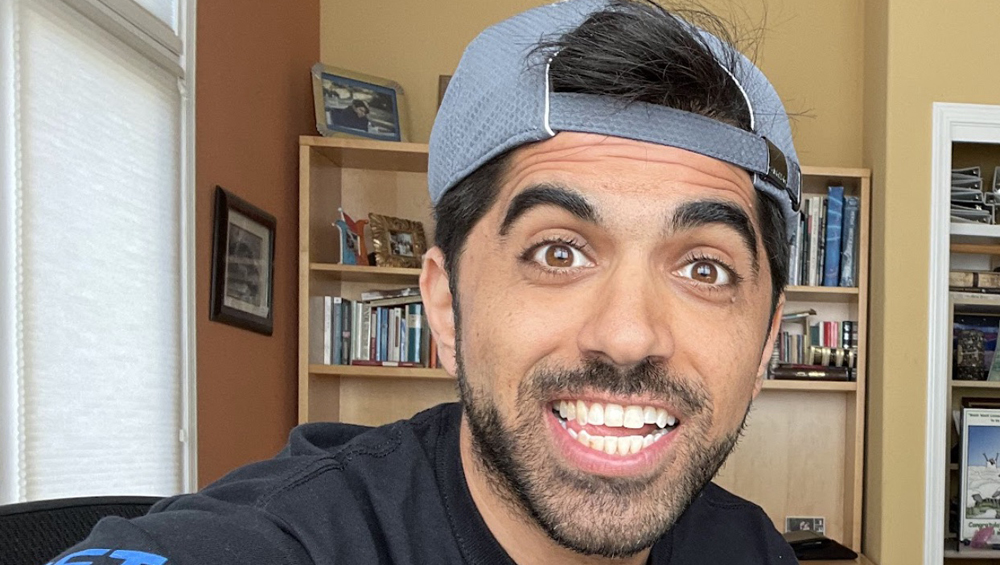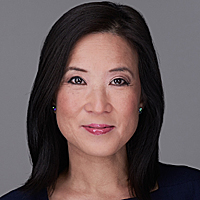
Video Journalist Scores Social Wins By Playing It Smart


Pauline Chiou
Social media is a numbers game of followers, likes, engagement and duration, but for journalist Uptin Saiidi, content creation in that space is more of a thinking person’s game.
“It’s very easy to fall into this trap — an addiction of views, virality, revenue and money. It can really drive you crazy,” says Saiidi, a former CNBC.com journalist who covered tech in Asia.
“I try to have less than 10% of my energy think about that and 90% of my energy just having fun telling the story I want to tell, producing, crafting, writing, scripting, interviewing and things like that.”
That amount of energy has helped Saiidi connect with viewers. His recent TikTok video about honesty in Singapore is notching 29.3 million views and counting. It shows Uptin leave his Macbook Pro at a Starbucks and then walk out of the coffee shop for an hour. Watch the video to see if his laptop gets stolen.
Two years ago, Saiidi left CNBC to start his own digital content creation company and establish himself as a hybrid journalist-entrepreneur. He started with zero followers that has now grown to two million across YouTube, Facebook, TikTok, Instagram and Snapchat. Saiidi says most of his followers are young millennials and Gen Zers with his largest regions being the U.S., U.K. and Middle East. He crisscrosses the world with a selfie stick and iPhone asking questions like, “Why does a Big Mac in Lebanon cost almost $20?”?
“I’ve never had a shortage of ideas. I think because working at CNBC, my brain became wired to look for the interesting,” Saiidi recently told my digital media class at Iona University. He Zoomed into our classroom from Dubai where he’s now based.
Here is Saiidi’s secret sauce to making compelling content:
Relatability: The selfie camera angle brings the viewer into the conversation like a friend. It’s relatable because it’s the way so many folks post on their personal social media pages. Think about moving away from a traditional 1:30 news package with a stand-up in the middle.
Saiidi told my class: “I noticed any time I used the iPhone in selfie mode, the views would be a lot more than when I had a cameraman using a DSLR because that felt a little too formal for YouTube or Facebook.”
Create suspense: The Singapore story went viral because everyone wants to see if Saiidi’s laptop gets stolen in the end. In the process, you learn about Singaporean society and the crime rate there. In the Big Mac Lebanon story, there’s suspense as we watch Saiidi on the streets of Beirut trying to navigate the black market and doing currency calculations on the fly.
Known vs. unknown: The essence of reporting is addressing what we know and don’t know then filling in the gaps. We all know Amazon, but many of us don’t know much about the tiny country of Luxemburg where Amazon’s European headquarters sits. So Saiidi takes us there and explores the tax benefits within the country.
“I didn’t even know where Luxemburg was,” said one of my students after he watched the video. “I learned a lot.”
With the Lebanon story, we all know what a Big Mac is, but we’re less clear on how inflation, currencies and the black market impact the cost of a burger.
“It took me a week being there [Beirut] and living there to figure out how the black market works,” Saiidi said. “How do I take this crazy situation [inflation] happening to millions of people and explain it in a sympathetic, empathetic way to the world? It excites me to make it digestible and understandable.”
Taxicab Wisdom: As a former local news reporter, I found the local cop, postal carrier and garbage truck driver to be some of the best sources of information. They see what people are throwing out, what they’re getting in the mail, who’s coming and going.
Add taxi drivers and Uber drivers to the list. That’s how Saiidi adds context to his videos. When he lands in a country to start shooting his stories, he chats up the taxi or Uber driver. “They’re bored, they want to talk and they’re full of information,” Saiidi says. “I just ask them, ‘How’s life here? How has the pandemic been? How’s the economy?’ There’s no shortage of answers especially because I cover economics and money. Everyone can relate to money. Everyone either gets paid or has to pay to eat. It’s the most universal topic in a way.”
Pauline Chiou (@PaulineChiou) is an adjunct media professor at Iona University and a previous news director at News 12 Westchester/Hudson Valley in New York; anchor/correspondent at CNN (Hong Kong), CNBC (Singapore), CBS Newspath; and local anchor/reporter at WBZ Boston and KPRC Houston.
































Comments (0)